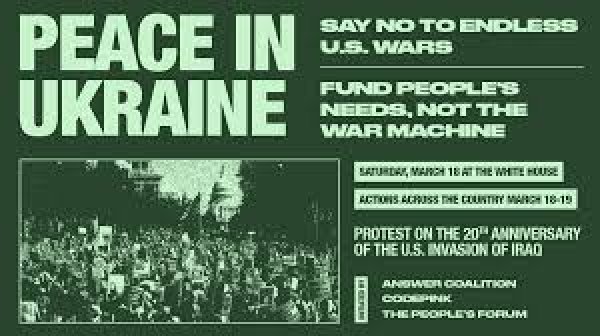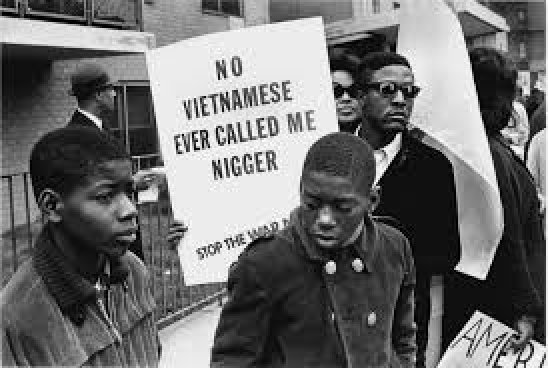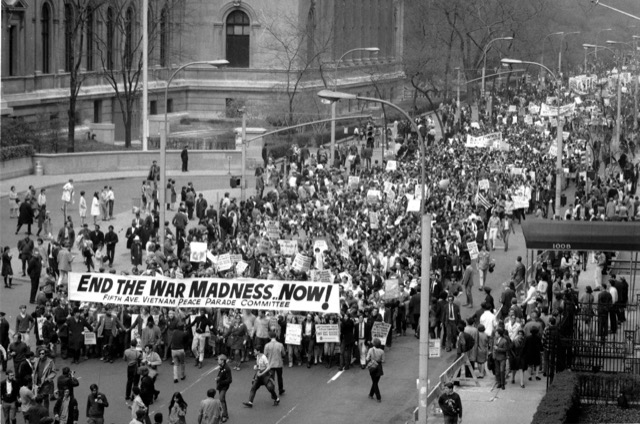
America’s endless wars have energized vocal and committed citizens across the country to take to the streets in protest. But more often than not protests against wars especially in the 19th century usually devolved into riots. The New York draft riots in 1863, the most violent insurrection in American history (don’t believe the Democrats who like to award that “achievement” to January 6th), were a protest against the passage of the first military draft during the Civil War. The riot quickly turned violent. 115 people, mostly African Americans, were murdered, hundreds of buildings destroyed to the tune of millions of dollars in damage.
Let’s take a stroll through the tangled history of U.S. wars in the 20th and 21st centuries and see how protests affected the politics of war-making. Antiwar protests didn’t really get into high gear until World War II. Although many Americans were dubious about entering the first world war particularly the “isolationists” (as the media misidentified those who denounced the war including presidential candidate Eugene Debs), demonstrations were not widespread. Of note the scene of the first public protest against “Wilson’s war in 1914” was conducted by 1,500 women who marched down New York City’s Fifth Avenue.
Public protests blossomed as World War II hove into view. Particularly before Pearl Harbor when, according to polls, only 7% of Americans favored America declaring war on Germany. America First committees formed to oppose the war had 800,000 members in 450 chapters and held mass rallies across the country. Predictably after Pearl Harbor, outrage against the “evildoers” mounted and war fever erupted. Support against the war plummeted as did public protests,
The next war in the U.S. cavalcade of wars didn’t take long to erupt. In 1950, the U.S invaded Korea in a “police action” (Truman decided not to seek a declaration of war from Congress fearful he wouldn’t get it). As the U.S. failed to win and casualties mounted (for a total of 36,516), the war grew increasingly unpopular. However, it wasn’t until the next decade and the next war that public protests came into their own. One protest march that did take place during the Korean invasion was organized and carried out by woman. It featured placards that read “Refuse to die for Yankee bankers (some things never change), Stop U.S intervention in Korea (or Vietnam, Iraq, Afghanistan, Syria, Yemen, Libya etc.), Hands off Korea, Not a man or a gun for the American war in Korea, and finally that perennial antiwar chant where only the name of the country changes —Hands off [Korea].

Antiwar protests blossomed as the U.S. invaded Vietnam. In 1965 Rolling Thunder, the escalation of bombing raids in the North, led to an outbreak of protests and demonstrations, particularly on college campuses. On November 15, 1969, millions of people took part in antiwar demonstrations in 800 cities worldwide. Listed by the 2004 Guinness Book of Records as the largest protest in human history, in the U.S. over one-half of a million gathered in Washington D.C. Other protests large and small formed in U.S. cities across the globe.
Three decades later, President George W. Bush and his band of merry marauders decided to invade Iraq. For the first time, people around the globe held proactive protests and demonstration trying to prevent the relentless U.S. march to war. Between January 3 and April 12, 2003, 36 million people across the globe participated in about 3,000 demonstrations. Other antiwar rallies took place in 2002. Despite the ferment, the Empire would not be dissuaded. On March 19, 2003, the U.S. invaded and began to destroy Iraq.

In 2008, voters who had elected Barack Obama with high hopes for a saner foreign policy were dismayed to discover that Obama was hewing to the empire play book —”There will be times when nations – acting individually or in concert – will find the use of force not only necessary but morally justified.”[Barack Obama] In response, on March 20, 2009 (two months after he was sworn into office) 10,000 Americans marched in D.C. to protest both the Iraq and Afghanistan wars. One month later 75,000 people gathered in D.C. to protest U.S. militarism.
As the U.S. rampages around the globe laying waste to Iraq, Afghanistan, Libya, Somalia, Yemen, Syria and now threatens World War III with a proxy war in Ukraine and another war in China (which holds $1 trillion of US debt), large demonstrations have become a regular feature in Europe.
In The U.S. the mainstream media in bed with the USG has been successful in keeping the public ignorant of the real danger of World War III. Propaganda spewed by the media at the direction of Congress and the White House lull the people into believing that their leaders know what they’re doing. On February 18, in Washington D.C. the Rage Against the US War Machine rally brought together people from the entire spectrum of political opinion — from far right conservatives to far-left radicals. 1,000 voices raised to demand an end to U.S. militarism, proxy warfare, and nuclear brinkmanship. Common sense demands for survival in a nuclear age.
Corporate America had a different agenda: the bottom line. In 2022, western oil companies banked $200 million in profits off the slaughter in Ukraine. The defense industry saw double digit increases in their stock prices — Lockheed Martin up 37%, Northrop Grumman up 41%, Raytheon (Lloyd Austin, U.S. defense secretary is a former board member) up 17%, General Dynamics up 19%. The rest of Americans haven’t fared so well stuck with a decrepit infrastructure where clean water is a luxury, a transportation system spewing environmental toxins, a health system that privileges corporate profits over patient care, a corporate education system that leaves millions of students carrying an enormous debt burden, and a financial system that punishes working class Americans to protect billionaire oligarchs.
That’s not the story you will hear from the propaganda machine aka the media which runs interference for the empire’s fixation on ruling the world. They call it spreading democracy. They provide other services for the government like downplaying or even neglecting to cover antiwar protests. Here’s a taste of MSNBC’s propagandizing in the wake of the February 18th rally — “As Biden leads West in support of democracy in Ukraine, a weird assemblage of voices dissent.” Other outlet described the participants as antisemites or Putin puppets. The New York Times and The Washington Post didn’t bother to cover it.

Do antiwar protests matter? The answer may be found in 2013 when President Obama asked Congress for authorization to invade Syria under the pretext of attacking ISIS. Suddenly members found themselves bombarded with protests from their constituents. An organized campaign to threaten congressional members where it hurts the most, their jobs, along with the jarring memory of massive antiwar demonstrations in 2002, 2003 and 2009 and 2012 convinced most legislators. His request was ignored.
Is an energized public ready to head to the streets to counter US aggression. Will America grow a vibrant antiwar movement? Maybe the growing rage and uneasiness all over America is a sign that the process has already started. Do we have time to find out?
350 total views, 1 views today
